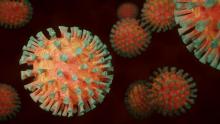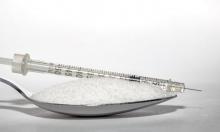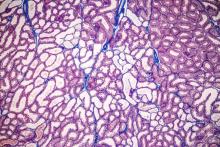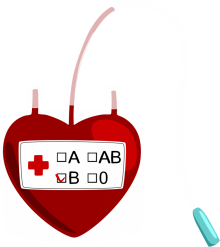חדשות המחקר

Wisam Sbeit, Anas Kadah, Amir Mari, Tawfik Khoury: A State-of-the-Art Review on the Evolving Utility of Endoscopic Ultrasound in Liver Diseases Diagnosis (Diagnostics (Basel) .)
Liver diseases are amongst the most common diseases worldwide and manifest as a parenchymatic and/or biliary injury due to several causes as well as focal liver lesions, ranging from benign to malignant ones. The diagnosis of liver diseases is based mainly on biochemical and advanced imaging studies and, when required, on liver biopsy. Endoscopic ultrasound (EUS), which combines endoscopy and ultrasonography, is one of the main examination techniques used in gastroenterology as it is applied to evaluate abnormalities in the lumen of the upper and lower gastrointestinal tract and to define pancreatic and hepato-biliary features, often in chronic patients. Given its high spatial resolution and its proximity to the liver, EUS is gaining popularity in the diagnostic work up of liver diseases. This is a comprehensive overview of the current literature on the diagnostic indications for EUS use in patients with liver diseases.

Michal Leshem, Nir Qvit: Approach for comparing protein structures and origami models - Part 2. Multi-domain proteins (Biochim Biophys Acta Biomembr .)
Protein structure is an important field of research, with particular significance in its potential applications in biomedicine and nanotechnology. In a recent study, we presented a general approach for comparing protein structures and origami models and demonstrated it with one-domain proteins. For example, the analysis of the α-helical barrel of the outer membrane protein A (OmpA) suggests that there are similar patterns between its structure and the Kresling origami model, providing insight into structure-activity relationships. Here we demonstrate that our approach can be expanded beyond single-domain proteins to also include multi-domain proteins, and to study dynamic processes of biomolecules.

Tawfik Khoury, Anas Kadah, Amir Mari, Bahir Sirhan, Wisam Sbeit: The Utility of Endoscopic Ultrasound Fine Needle Aspiration in Pancreatic Cystic Lesions Diagnosis (Diagnostics (Basel) . )
The yield of biochemical analysis of pancreatic cysts fluid obtained via fine needle aspiration (FNA) is limited. We aimed to assess whether biochemical cyst analysis correlates with the endoscopic ultra-sonographic (EUS) diagnosis.

Clinical, Surgical, and Socio-Psychological Factors and Depression Post-Cardiothoracic Surgery (Ann Thorac Surg .)
Depression is highly prevalent in cardiac surgical patients and is associated with mortality. The objectives of the study were to evaluate depression scores longitudinally pre- and post-operatively and to examine the association between post-operative depression scores and clinical, surgical, and socio-psychological factors. (Noa Caspi-Avissar, Liza Grosman-Rimon, Dina Granot, Diab Ghanim, Shemy Carasso, Amjad Shalabi, Doron Sudarsky, Wadi Kinany, Offer Amir, Erez Kachel)

Esther Levi, Ohad Ronen: Community Clinic and Emergency Department Physicians' Adherence to Acute Pharyngitis Antibiotic Treatment Guidelines (Eur J Clin Invest . )
Antibiotic treatment guidelines for common infectious diseases enable proper diagnosis and treatment and avoid unnecessary antibiotic treatment, preventing both financial expenditure and antimicrobial resistance to antibiotics. The aim of our study was to investigate whether community physicians referring patients to the medical center and whether emergency department (ED) physicians diagnose and treat acute pharyngitis according to these guidelines.

Elon Glassberg, Ronny Ben-Avi, Moshe Matan, Avi Benov: Clinical Course and Outcomes of Severe Covid-19: A National Scale Study (J Clin Med .)
Knowledge of the outcomes of critically ill patients is crucial for health and government officials who are planning how to address local outbreaks. The factors associated with outcomes of critically ill patients with coronavirus disease 2019 (Covid-19) who required treatment in an intensive care unit (ICU) are yet to be determined. This was a retrospective registry-based case series of patients with laboratory-confirmed SARS-CoV-2 who were referred for ICU admission and treated in the ICUs of the 13 participating centers in Israel between 5 March and 27 April 2020. Demographic and clinical data including clinical management were collected and subjected to a multivariable analysis; primary outcome was mortality.

COG6-CDG: Expanding the Phenotype with emphasis on glycosylation defects involved in the causation of Male Disorders of Sex Development (Clin Genet .)
COG6-congenital disorder of glycosylation (COG6-CDG) is caused by biallelic mutations in COG6. To-date, 12 variants causing COG6-CDG in less than 20 patients have been reported. Using whole exome sequencing we identified two siblings with a novel homozygous deletion of 26 bp in COG6, creating a splicing variant (c.518_540 + 3del) and a shift in the reading frame. The phenotype of COG6-CDG includes growth and developmental retardation, microcephaly, liver and gastrointestinal disease, hypohydrosis and recurrent infections. We report two patients with novel phenotypic features including bowel malrotation and ambiguous genitalia, directing attention to the role of glycoprotein metabolism in the causation of disorders of sex development (DSD). Searching the glycomic literature, we identified 14 CDGs including males with DSD, a feature not previously accentuated. This study broadens the genetic and phenotypic spectrum of COG6-CDG and calls for increasing awareness to the central role of glycosylation processes in development of human sex and genitalia. (Hanna Mandel, Nehama Cohen Kfir, Ayalla Fedida, Efrat Shuster Biton, Marwan Odeh, Limor Kalfon, Shani Ben Harouch, Vered Sheffer Fleischer, Yoav Hoffman, Liat Apel-Sarid, Tzipora C Falik-Zaccai)

Igor Waksman, Evgeny Solomonov: Implementing a Practical Global Health Curriculum: The Benefits and Challenges of Patient-Based Learning in the Community (Front Public Health . )
A growing number of medical schools across the world have incorporated global health (GH) into their curricula. While several schools focus GH education on lecture-based courses, our premise is that global health education should embody a holistic approach to patient care and medical education in local communities. Medical students may learn global health by focusing on real patients, their families and communities as part of a practical curriculum.
A unique GH curriculum was devised to compare student learning outcomes on a practical vs. lecture-based course. The premise was that learning from patients would result in a greater breadth of coverage of the global health syllabus as compared to that from a lecture-based course.

Chaim Putterman: The T Cell Receptor Repertoire in Neuropsychiatric Systemic Lupus Erythematosus Front Immunol .)
In systemic lupus erythematosus (SLE), widespread T cell infiltration into target organs contributes to inflammation and organ damage. Autoreactive T cells become aberrantly activated in this disease due to dysfunctional T cell receptor signaling that lowers the activation threshold. Characterizing the T cell repertoire can provide further insight into the specific homing and proliferation of these T cells into lupus target organs. In the spontaneous lupus model, MRL/lpr, the TCR repertoire has not been fully elucidated, especially for T cells infiltrating the brain. Our aim was to investigate and compare the TCR repertoire between MRL/lpr mice and its congenic controls, MRL/MpJ, and within MRL/lpr tissues.

Worood Sirhan, Ron Piran: Current Approaches in Diabetes Treatment and Other Strategies to Reach Normoglycemia (Curr Top Med Chem.)
Cells are mainly dependent on glucose as their energy source. Multicellular organisms need to adequately control individual glucose uptake by the cells, and the insulin-glucagon endocrine system serves as the key glucose regulation mechanism. Insulin allows for effective glucose entry into the cells when blood glucose levels are high, and glucagon acts as its opponent, balancing low blood glucose levels. A lack of insulin will prevent glucose entry to the cells, resulting in glucose accumulation in the bloodstream. Diabetes is a disease which is characterized by elevated blood glucose levels. All diabetes types are characterized by an inefficient insulin signaling mechanism. This could be the result of insufficient insulin secretion as in the case of type I diabetes and progressive incidents of type II diabetes or due to insufficient response to insulin (known as insulin resistance). We emphasize here, that Diabetes is actually a disease of starved tissues, unable to absorb glucose (and other nutrients), and not a disease of high glucose levels. Indeed, diabetic patients, prior to insulin discovery, suffered from glucose malabsorption. In this mini-review, we will define diabetes, discuss the current status of diabetes treatments, review the current knowledge of the different hormones that participate in glucose homeostasis and the employment of different modulators of these hormones. As this issue deals with peptide therapeutics, special attention will be given to synthetic peptide analogs, peptide agonists as well as antagonists.

Amiel A. Dror: Striatin Is Required for Hearing and Affects Inner Hair Cells and Ribbon Synapses (Front Cell Dev Biol .)
Striatin, a subunit of the serine/threonine phosphatase PP2A, is a core member of the conserved striatin-interacting phosphatase and kinase (STRIPAK) complexes. The protein is expressed in the cell junctions between epithelial cells, which play a role in maintaining cell-cell adhesion. Since the cell junctions are crucial for the function of the mammalian inner ear, we examined the localization and function of striatin in the mouse cochlea. Our results show that in neonatal mice, striatin is specifically expressed in the cell-cell junctions of the inner hair cells, the receptor cells in the mammalian cochlea.

Similar Procedural Success of Transcutaneous Aortic Valve Replacement with Prosthesis Valve Sizing by Either Three-Dimensional Transesophageal Echocardiography Modeling or Computed Tomography (J Am Soc Echocardiogr .)
Prosthesis size selection for transcutaneous aortic valve replacement (TAVR) is commonly done by aortic annulus measurements in cardiac computed tomography angiography (CCTA). Correct sizing of the aortic annulus is of paramount importance to a successful implantation. Undersizing may result in paravalvular leak and patient-prosthesis mismatch, both of which are responsible for significant morbidity, while oversizing may result in catastrophic outcomes such as aortic annulus rupture. We sought to determine whether procedure outcomes of TAVR are comparable for patients whose aortic annuli were measured by 3D-TEEm artificial intelligence modeling versus CCTA-derived modeling. (Sagi Gleitman, Gabby Elbaz-Greener, Diab Ghanim, Fabio Kusniec, Asaf Rabin, Doron Sudarsky, Liza Grosman-Rimon, Offer Amir, Shemy Carasso)

Anthony Luder, Alon Yulevich: Pediatrician, watch out for corona-phobia (Eur J Pediatr .)
The current outbreak of COVID-19 raging globally is taking a heavy toll on the adult population, with a rapidly growing number of newly infected and critically ill patients. However, to date, mortality rate among children is low as they mostly suffer from a mild disease. Yet, other more routinely encountered childhood diseases do not stand still and continue to be the main share of pediatricians' everyday challenges....Our objective is to highlight the possibility that measures taken to mitigate this pandemic may lead to a substantial delay in the diagnosis of other non-COVID-19 related diseases.

Rola Nakhoul, Farid Nakhoul, Nakhoul Nakhoul: Autophagy in diabetic nephropathy: a review (Int Urol Nephrol .)
Diabetes mellitus (DM) is the leading cause of end stage renal disease. 40% of the patients worldwide will require replacement therapy after 20 years of DM worldwide. Early-stage diabetic nephropathy is characterized by hyperfiltration related to hypeglycemia-induced afferent artery vasodilatation with micro-and macroalbuminuria. Later on, proteinuria with arterial hypertension may appear, culminating in glomerular filtration rate (GFR) decline and end stage renal disease. Forty percent of diabetic patients develop microvascular and macrovascular complications, with increased risk among patients with genetic predisposition, such as Haptoglobin 2-2 phenotype. The most frequent complications in the daily clinical practice are diabetic kidney disease, diabetic retinopathy and vascular disease, such as coronary artery disease and stroke. Various pathways are involved in the pathogenesis of diabetic kidney disease. Chronic systemic inflammation and the inflammatory response, such as increased circulating cytokines (Interleukins), have been recognized as main players in the development and progression of diabetic kidney disease. DM is also associated with increased oxidative stress, and alterations in carbohydrate, lipid and protein metabolism. Overexpression of the renin-angiotensin-aldosterone system (RAAS) in the kidney, the vitamin D-Vitamin D receptor-klotho axis, and autophagy. Differences in the ATG5 protein levels or ATG5 gene expression involved in the autophagy process have been associated with diabetic complications such as diabetic kidney disease. Under normal blood glucose level, autophagy is an important protective mechanism in renal epithelial cells, including podocytes, proximal tubular, mesangial and endothelial cells. Down regulation of the autophagic mechanism, as in hyperglycemic condition, can contribute to the development and progression of diabetic kidney disease.




